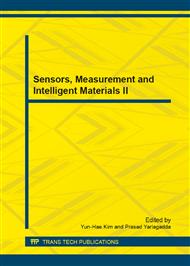p.1578
p.1583
p.1588
p.1592
p.1599
p.1603
p.1607
p.1611
p.1615
The Convective Heat Transfer in Furcated Blood Vessels
Abstract:
A finite element model was developed to simulate the 3-D velocity and temperature distributions in a vessel system including a bifurcated blood vessel and two branches. The effect of the angel between vessels and bifurcation ratio were taken into account, and the local Nusselt number at three typical radial angels and the mean Nusselt number on a section in the branching vessel were obtained. Results show that: the flow and temperature fields were highly unlike the distributions of a single vessel; the local Nusselt number were different at different radial angels; In the entrance region of the branching vessel the mean Nusselt number on a section was larger than that in a single vessel, and there was a maximum of mean Nusselt number whose value and location varied as the different furcating angel or bifurcation ratio; the mean Nusselt number decays rapidly at a small bifurcation ratio.
Info:
Periodical:
Pages:
1599-1602
Citation:
Online since:
December 2013
Authors:
Price:
Сopyright:
© 2014 Trans Tech Publications Ltd. All Rights Reserved
Share:
Citation:


